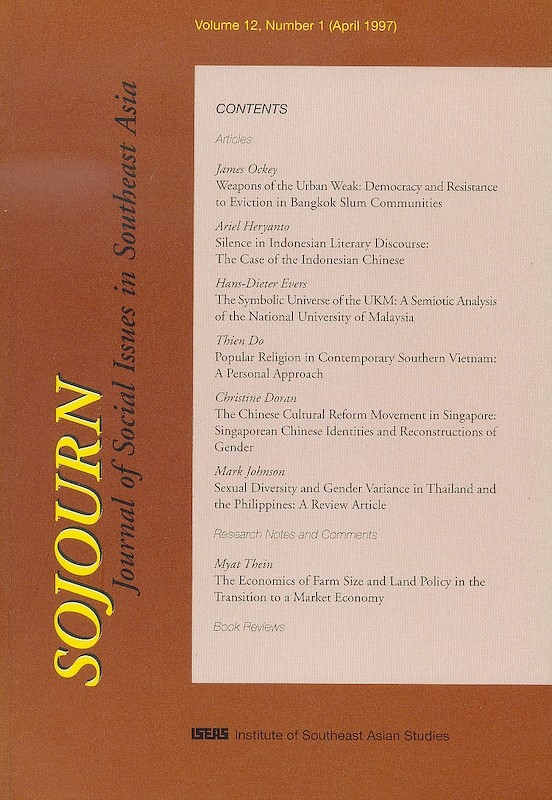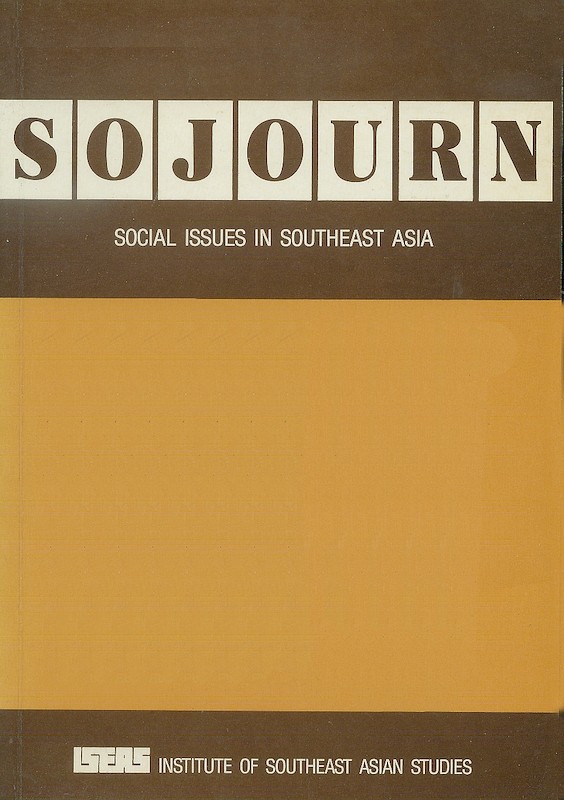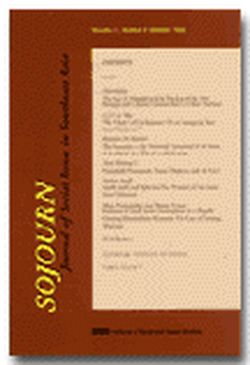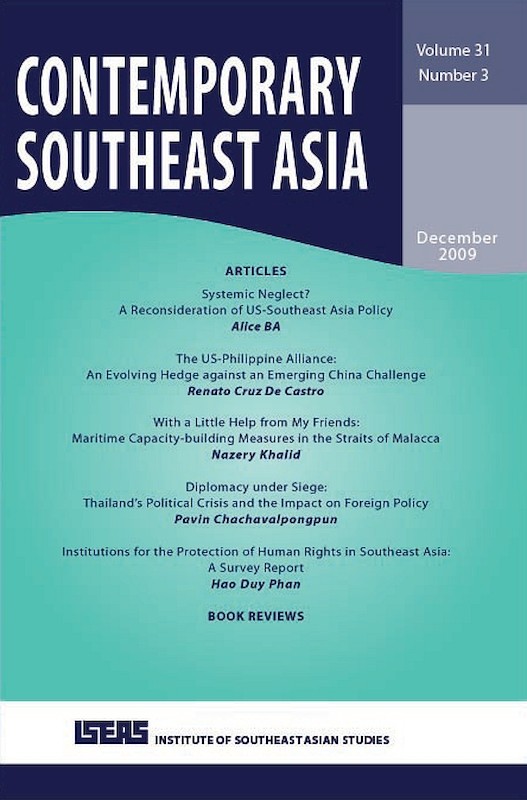SOJOURN: Journal of Social Issues in Southeast Asia Vol. 12/1 (Apr 1997)

Date of publication:
April 1997
Publisher:
Institute of Southeast Asian Studies
Number of pages:
152
Code:
SJ12/1
Contents
-
Preliminary pages
-
Weapons of the Urban Weak: Democracy and Resistance to Eviction in Bangkok Slum Communities, by James Ockey, contributor see abstractThis paper takes a careful look at resistance to eviction in Bangkok slum communities. When an unstable parliamentary regime replaced military authoritarian rule in 1973, new tactics of resistance to eviction emerged. These innovative tactics were developed to take advantage of the new opportunities provided by the parliamentary structure. In the process of identifying new opportunities and developing new tactics for use in a parliamentary system, the urban poor have learned democratic values.
-
Silence in Indonesian Literary Discourse: The Case of the Indonesian Chinese, by Ariel Heryanto, contributor see abstractThis paper raises questions about the curious absence of ethnic tension involving the Chinese minority as a theme within the Indonesian literary canon during the seventy-five or more years of its history. The silence is intriguing given the salience of the topic in everyday conversations, national policies, as well as non-fictional writings and fictional works outside the officially sanctioned sphere.
-
The Symbolic Universe of the UKM: A Semiotic Analysis of the National University of Malaysia, by Hans-Dieter Evers, contributor see abstractThis paper is an attempt to unravel the symbolism and the universe of meaning connected with Universiti Kebangsaan Malaysia (UKM), the National University of Malaysia. Taking the methodology of analysis from social and urban semiotics, phenomenology, and post-modern social theory, the paper explores the symbolic triangle of Islam, adat, and ruler à symbolized by buildings, names, and locations à on the campus. On the other hand, the paper argues that the academic part of the symbolic universe of the UKM is derived from the British model and has been globalized and integrated into the international world of learning. In the most recent phase of construction work the symbolism of the Malay world has been abandoned and replaced by signs and styles taken from either Southeast Asian or a post-modern symbolic repository.
-
Popular Religion in Contemporary Southern Vietnam: A Personal Approach, by Thien Do, contributor see abstractThis paper presents an overview of popular religion in Vietnam using a number of personal frameworks or clusters of concepts. Its aim is to offer a four-part approach which may be helpful to unacquainted observers. Additionally, it highlights the mytho-poetic motifs of mountain and river, as recorded, for example, in southern Vietnamese oral literature, to reflect the environment with its challenges to newcomers, its material and spiritual resources. These motifs help outline the rough sketch for a complex picture. Four realms have been identified, namely, the village Confucian-Daoist temple dinh; the private Buddhist-Daoist temple; trance mediumship; and the practice of self-cultivation, with the southern "Daoists" (ong dao) being its famous proponents.
-
The Chinese Cultural Reform Movement in Singapore: Singaporean Chinese Identities and Reconstructions of Gender, by Christine Doran, contributor see abstractFrom about 1895 to 1910, prominent leaders of the Straits Chinese community in Singapore implemented a cultural reform movement, with the aim of reconstructing the meaning of Straits Chinese ethnic identity. The movement attempted to revive and re-invent aspects of Chinese tradition, while at the same time making an accommodation with pressures for modernization. This paper focuses on the gender policies and prescriptions formulated by reformist leaders, whose recommendations had important implications for the lives of Chinese women in Singapore. It is shown that the reformation of Straits Chinese women was an integral and essential component of the cultural reform programme.
-
Sexual Diversity and Gender Variance in Thailand and the Philippines: A Review Article, by Mark Johnson, contributor
-
The Economics of Farm Size and Land Policy in the Transition to a Market Economy, by Myat Thein, contributor see abstractThis paper considers aspects of the implications of the changes in unimodal farm structure brought about by the transition to a market economy in Myanmar and especially by the introduction of summer paddy in Phyapone district of the Ayeyarwaddy division, Lower Myanmar. The focus of the discussion will be on the economics of farm size and land policy.
- BOOK REVIEW
-
BOOK REVIEW: Village Java under the Cultivation System 1830-1870, By R.E. Elson, by John N Miksic, contributor
-
BOOK REVIEW: Ecology and Practical Technology: Peasant Farming Systems in Thailand, By Shigeharu Tanabe, by J F Proulx, contributor






